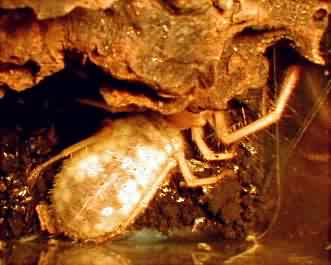- Joined
- Aug 11, 2003
- Messages
- 976
Iraq or Afghanistan for sureOriginally posted by BaltimoreBoy
where can i get one of those?
Iraq or Afghanistan for sureOriginally posted by BaltimoreBoy
where can i get one of those?

There is very little truth to most of those comments. Various species of the genus Galeodes (Family Galeodidae) compete for the largest solifugid species known. A very large, female specimen may reach 3 inches in body length and 6 to 7 inches in legspan. These stories of 12-inch solifuges are extreme exaggerations. The theory of solifuges chasing people for their shadow does have some truth, as there have been several accounts of this situation. I have never seen this behavior first-hand as I only collect Solifugae at night. Solifugid eggs need precise conditions for proper development, something a duffle bag definitely could not provide.sschind said:Take this wityh a grain of salt but I am going to relay a few observations that few of my customers mad about the camel spiders in Iraq. They were stationed there at various times.
3 different customers reported them as achieving lengths of close to 12". Most "experts" claim no more than 5 or 6
one guy said they would chase you down for the shade your shadow provides and that they could outrun you.
this guy also said that when he came home he found an eggsack in his duffle bag and it hatched into 20 babies and he claimed he sold them on ebay for 250.00 each. I did a search for closed items and found no references but it may have been past the period where closed items are no longer accesible.
Like I said, I don't know how much truth there is to any of these comments but I am passing it along.
Steve Schindler